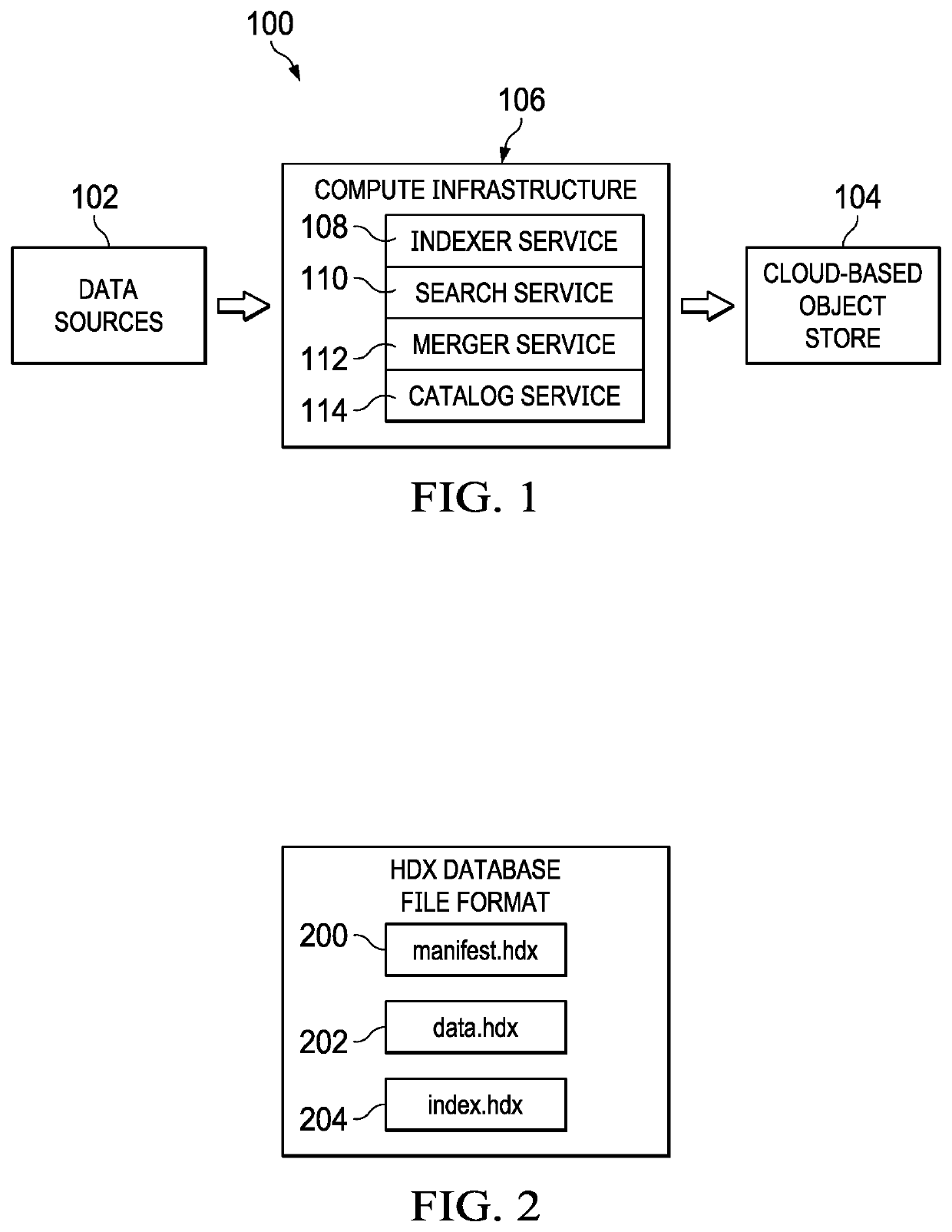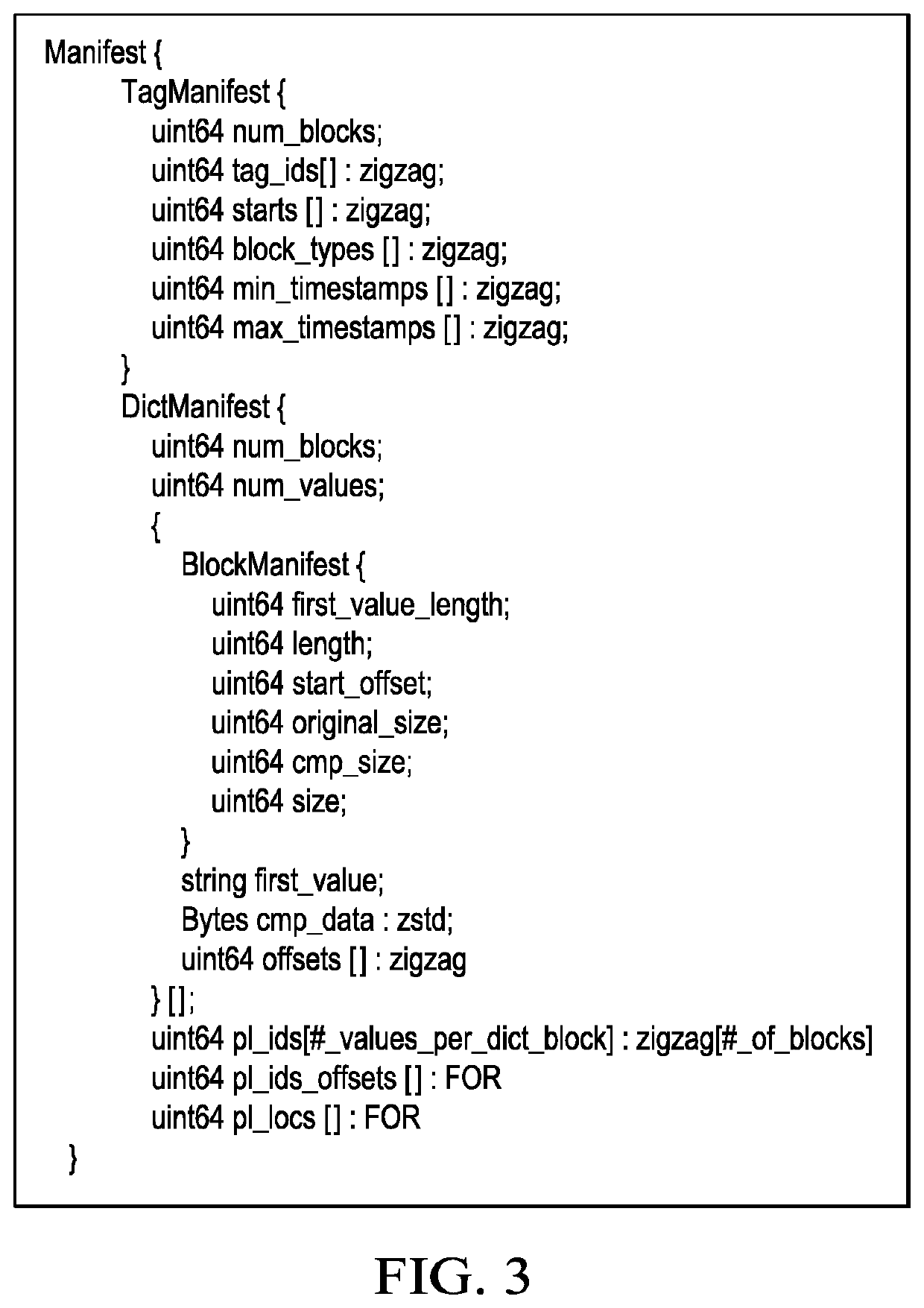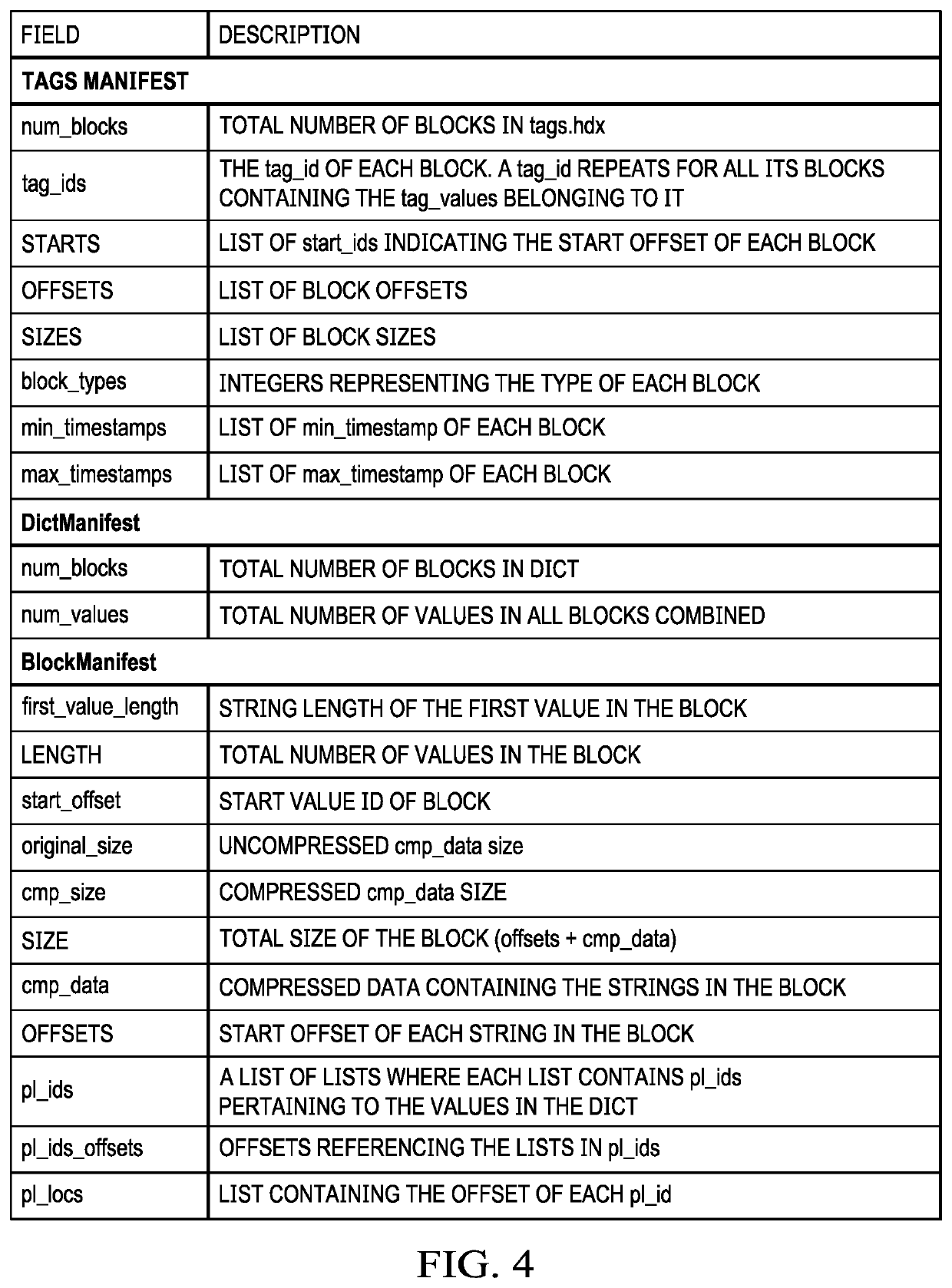High density time-series data indexing and compression
a time-series data and indexing technology, applied in the field of time-series-based data storage and retrieval, can solve the problems of intractable problem of efficient and cost-effective information storage and retrieval for the type of data, difficult information retrieval (e.g., data analysis, etc.), and achieve cost-effective, cost-effective, efficient search
- Summary
- Abstract
- Description
- Claims
- Application Information
AI Technical Summary
Benefits of technology
Problems solved by technology
Method used
Image
Examples
Embodiment Construction
[0024]FIG. 1 is an overall system 100 in which the techniques of this disclosure may be carried out. As noted, typically the data stored using the techniques herein is of a particular type, namely, time-series columnar-based information. In this usual case, streamed time-series data of this type is being generated continuously from one or more data sources 102, such as IoT devices, log sources, or the like. The nature and type of these data source(s) is not an aspect of this disclosure. Typically, the data is configured for storage in a network-accessible data store, such as a cloud-based object store 104. There may be multiple such object store(s), and the nature, number and type of these object store(s) is not an aspect of this disclosure either. Representative object storage is Amazon S3, Google Cloud, and many others. Stated another way, the techniques herein assume one or more data source(s) 102 of the time-series data, as well as the existence of one or more data store(s) 104 ...
PUM
 Login to view more
Login to view more Abstract
Description
Claims
Application Information
 Login to view more
Login to view more - R&D Engineer
- R&D Manager
- IP Professional
- Industry Leading Data Capabilities
- Powerful AI technology
- Patent DNA Extraction
Browse by: Latest US Patents, China's latest patents, Technical Efficacy Thesaurus, Application Domain, Technology Topic.
© 2024 PatSnap. All rights reserved.Legal|Privacy policy|Modern Slavery Act Transparency Statement|Sitemap



